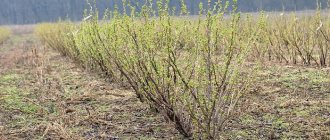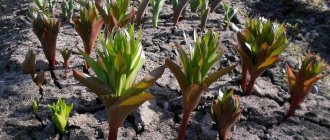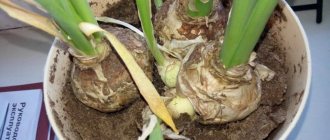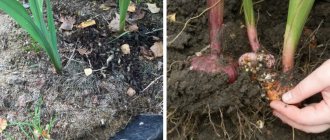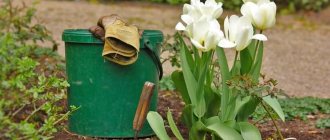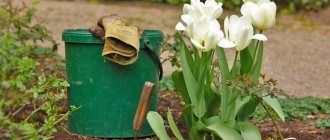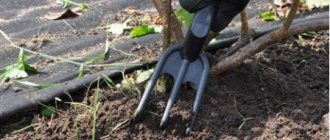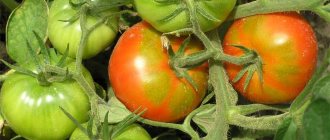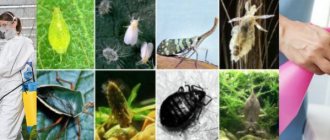Peonies can become a decoration for any area.
The spreading bushes and huge balls of inflorescences are mesmerizing. But to see such beauty, peonies must be fed after winter. Dear readers!
For you, we have created communities on social networks in which useful articles and interesting ideas are published several times a day! Subscribe and receive useful content in a convenient format! We will tell you how to do this and what drugs to use in today’s article.
When to feed peonies in spring
The very first feeding of peonies is carried out some time after the snow melts. The plant receives the amount of moisture it needs from melted snow, and at the same moment nitrogen or nitrogen-potassium fertilizers must be added.
ON A NOTE. When applying fertilizers, you need to focus on the plant. As soon as the first shoots appear from the ground and produce leaves, you need to apply fertilizer.
This is done so that the bush accelerates the regrowth of the ground part (stems and leaves).
The next two feedings are carried out during the period of budding and bud formation after flowering. Budding in peonies occurs at the end of spring at best, but the bud formation phase already refers to summer feeding.
Tips for the procedure
The procedure can bring noticeable positive results. But only if it is done correctly. To perform fertilizing correctly, you must follow the following recommendations:
- When applying fertilizers, it is necessary that the soil is moist and pre-watered. It is highly not recommended to feed a plant around which there is dry soil.
- Follow the recommended regimen.
- Monitor the concentration and amount of fertilizer applied. Excess will not only not bring the desired benefit, but can also be harmful to the plant.
- It is recommended to monitor the amount of fertilizers with nitrogen, because if you add too many preparations with nitrogen, this will cause rapid growth of leaves and the growth of buds will slow down.
- When root feeding, make sure that the nutrient does not get behind the leaves of the plant, as this can cause burns.
- It must be remembered that for abundant flowering of peonies in the spring, not only this procedure is important, but also other care: regular watering, loosening the soil, eliminating weeds.
Among all the feedings, it is the spring one that is of particular importance. It is needed for the plant to recover after winter and for peonies to bloom magnificently. Of course, everything should be in moderation, otherwise, instead of an excellent result, you can harm the flower. If you follow the recommended schemes, tips and rules, then success will definitely await you.
Schemes for feeding peonies with fertilizers
The greatest effect is achieved when applying fertilizers according to a certain pattern. Then the flowers are evenly saturated with the necessary nutrients, grow faster and become more resistant to pests.
The first fertilizing is nitrogen
The purpose of the first application of fertilizer is to saturate the bushes with nitrogen. This is the main material for the development and growth of the plant. In order for the flower to be strong and healthy, you can feed it not only with nitrogen, but also with potassium.
The first feeding is carried out with a solution of urea (40 g per bucket of water). Since after winter the above-ground part of the peony is still small, it is better to apply fertilizers at the root.
At the same stage, you can use purchased Kemira. A handful of the drug is evenly distributed in a circle after watering and embedded in the soil to a depth of 1 bayonet.
ON A NOTE. If you use Kemira, then you do not need to use other fertilizers.
The second feeding is complex
At this stage, future flowering is stimulated. It occurs during the budding period approximately 15 days before flowering begins.
Complex feeding is very effective when superphosphate (40 g) and potassium sulfate (20 g) are added to the mullein solution.
Third feeding - after flowering
When the first flower fades, you need to count two weeks and feed the flower again. This is necessary to stimulate the formation of new buds and ensure longer flowering of the shrub.
The fertilizer is prepared from 20 liters of water, 30 grams of potassium sulfate and 30 grams of superphosphate.
Caring for peonies after flowering: summer
Depending on the type and variety, peonies bloom from early May to late June.
Some varieties form side buds near the main one, and if they are cut off (pinching), the central one will be larger. And if you remove the fading main bud, then we will prolong the flowering of the bush due to the side flowers.
How to properly cut peonies for a bouquet?
In order for the bush to establish good renewal buds, it is necessary to protect the vegetative mass. Since the flowers are on leafy shoots, cut off no more than ½ of their total number.
When growing peonies, specifically for cutting, remove the side buds (pinching) and leave one central bud. This will allow the flower to grow very lush and strong.
In any case, be sure to leave 2-3 leaves on the stem remaining on the bush.
Peony pruning after flowering
We remind you that you can cut flowers only from the 3rd year of the bush’s life. We talked about this in detail in the article about planting peonies, section - “What year do they bloom?”
Care after flowering: should peonies be trimmed?
The next 30-40 days after flowering are very important - renewal buds are laid and developed, from which flowers will appear in 2 years. Proper care ensures the excellent condition and appearance of the bush.
Trim the spent heads back to the first leaf. This will help avoid the occurrence of gray rot, increase frost resistance and save the energy that the plant would spend on ripening the seeds.
Agricultural technology in the summer comes down to loosening, fertilizing and watering the flower at the right time.
SUPPORT
For varieties with large flowers, it is recommended to install supports around the flower from reinforcement or stakes with a wire ring.
Ready support for peonies
_https://www.obi.ru/opory-dlya-rastenii-i-kustoderzhateli/kustoderzhatel-pion-plastmassovyi-sbornyi-zelenyi/p/3728409. Copy the address and paste in a new tab.
Top dressing
Final feeding (No. 3) contributes to the successful formation of powerful renewal buds, on which growth, development and flowering depend.
- The optimal period is 2-3 days after flowering. Volume: dissolve 16-21 grams of potassium and 26-31 grams of superphosphate in ten liters of water and pour over the peony.
The abundant flowering of an adult bush and a large number of cut flowers require two feedings: immediately after flowering and after 15-20 days.
PREVENTION
Also treat twice with copper oxychloride (20 grams per five liters) to prevent diseases.
WATERING
In July - August it is important to water the flowers in sufficient quantities, especially in August. In summer there are often droughts and lack of moisture. It is better to water the flowers less often, but abundantly, once every 2-3 weeks, depending on precipitation, 10-30 liters per bush.
What organic fertilizers can be used to feed peonies?
Peonies respond well to fertilizing with organic compounds. Let's look at the most effective fertilizers.
Mullein and chicken droppings
This is the most popular complex organic fertilizer. It is better to use it for already mature plants with a developed root system. The fertilizer is prepared from water (10 l), bird droppings (1 kg) and mullein (2 l). Before use, the composition should sit for 7-10 days. It should be applied not at the root, but in a circle at a distance of at least 40 cm from the shoots of the bush.
Rotted manure
This is a fairly gentle fertilizer that can be applied to young, recently planted or propagated peonies. Rotted manure must be mixed with soil and peat. 10% manure in the soil mixture is enough to feed flowers.
The best time to feed
To plan the optimal feeding schedule, consider whether your peonies are young or already mature. In the first years, the root system is formed, so it is important to stimulate and preserve it. In the future, peonies will need more active and intensive support, especially after eight years. In any case, spring feeding is carried out in three stages.
Photo: grounde.ru
How and what to feed an apple tree in spring
How to foliar fertilize flowers
From time to time it is advisable to carry out foliar feeding of peonies. It is very important that at least 14 days pass from one spray to the next.
The first spraying can be done when the emerging stems have grown a little. It is best to fertilize with a urea solution (40 g per bucket of water).
Next time, you can add a complex fertilizer to the urea, for example, sodium humate or Heteroauxin.
The third spraying is recommended to be carried out only with Humate or Heteroauxin.
ON A NOTE. For foliar feeding, you can use the purchased preparation “Ideal” (1 tablespoon per bucket of water).
Pests and diseases
Unfortunately, there are diseases and pests that most often affect peonies. Pests include aphids, caterpillars, beetles, bronze beetles and root nematodes. Diseases include gray rot, root rot, leaf spot and powdery mildew.
Gray mold, spotting and powdery mildew
A fungal disease is most often manifested by rotting of stems, sometimes leaves and buds due to excessive air humidity and excess nitrogen. Infected parts of the plant should be cut off and burned outside the site.
To prevent this, remove fallen petals from the leaves - spots with gray rot appear where they fall due to dew or in wet weather. Cut flowers to the first leaf when they have lost their decorative effect.
Prevention
For fungal diseases (gray rot, powdery mildew, etc.), spray the plants twice before flowering: when the shoots grow and when the buds ripen. For various spotting, spray the bushes twice after flowering.
It is better to treat the plant and soil around it with copper sulfate (40 g per 10 liters of water or 4 g per m2), iodine solution (1 ml per 400 ml), potassium permanganate (1 g per 4 l) or infusion of onion peels (pour 100 g 5 l of water and leave for 24 hours).
For more details, see the chapter on fungicides and folk remedies in the article: “ HOW TO FIGHT Powdery Mildew ?”
Lack of phosphorus and brown spots on leaves
Since peonies often grow for more than 10-20 years in one place, they often lack phosphorus and brown spots appear on the leaves. When fertilizing, mineral fertilizers should reach the roots, but this is not always possible, since insoluble phosphorus compounds settle in the top layer of soil.
In order to avoid element deficiency, phosphorus fertilizers (bone meal, superphosphate or phosphate rock, etc.) are added to the fertilizing layer during planting. And among them it is better to choose organic fertilizers (bone meal), they decompose slowly and provide the bush with phosphorus for a long time.
Feeding peonies with folk remedies
You can also feed peonies using folk remedies. Let's look at the most popular of them.
Rye bread
A loaf of bread is crumbled and filled with warm water for 12 hours. You need about a liter of water. The main thing is that it completely hides the bread. Next, the resulting mixture is dissolved in a bucket of water and the plants are fed. For a small bush, 1 cup is enough; for large bushes, you need to spend at least 3 liters of grain fertilizer.
Chicken droppings
You can buy dry concentrate in the store. 500 g of the drug is soaked in a bucket of water for 14 days. The result is a concentrate, which is diluted with water 1 to 10 and applied under the plants. To enhance the effect, you can add a glass of ash to the solution.
Yeast
Yeast feeding is an excellent growth stimulator. First, prepare the concentrate. For a liter of water you need 200 grams of sugar and 100 grams of fresh yeast. All components are thoroughly mixed and left to ferment in a warm place until the morning. The resulting solution is mixed with water 1 to 10 and applied under the plants.
This fertilizer should be applied during budding.
Ash
A favorite fertilizer for many gardeners. Prepared from a glass of ash and a bucket of water. The composition is mixed, settled and used during irrigation.
Nettle infusion
Finely chop young nettles, add 3 liters of water, leave for two days. Then the concentrate is filtered and diluted in 2 buckets of water.
How to feed peonies with bone meal
Ready-made bone meal can be purchased at gardening stores. Bone meal decomposes in the soil gradually and its effect is from 6 months to 3 years. Therefore, it is advisable to apply it to the soil in the fall. But by spring, the root system will strengthen faster, the plant will grow stronger faster, more shoots with buds will appear, and flowering will improve.
The high content of phosphorus (29-34%) and calcium (up to 45%) has such a positive effect on the plant. Even a small amount of nitrogen (only 1%) and a wide range of microelements contributes to the rapid growth and rapid blooming of buds. But there is no potassium, so when fertilizing you should add wood ash to the soil.
Bone meal is added in powder form for digging in the fall or loosening in the spring. It is enough to sprinkle the powder into the root circle, 2-3 handfuls per plant, followed by embedding into the soil. Or make a hood. To do this, 50 g of powder is diluted in 1 liter of hot water, mixed and left to infuse for several hours. Stir occasionally. The finished infusion is then diluted in 20 liters of water and watered over the plants.
Features of feeding tree peonies
Tree peonies begin to bloom earlier than their herbaceous counterparts. Therefore, you also need to apply fertilizers earlier.
A prerequisite for feeding tree-like specimens is moist soil. You cannot add dry food. Therefore, before applying fertilizer, the soil under the plant is watered abundantly.
The procedure for applying fertilizers is no different. First, nitrogen fertilizers are used (urea, mullein, ammonium nitrate), and during the formation of buds, complex compositions based on potassium and phosphorus components are added.
The proportions can be used the same as when fertilizing herbaceous specimens. The following mixtures are also effective:
- In early spring: 50 grams of saltpeter and 20 grams of potassium salt per 1 plant;
- At the budding stage: 8 g of urea and 15 g of superphosphate per plant;
- 15 days after the first flower falls: 15 g of potassium salt and 20 g of superphosphate per plant.
Caring for peonies in the fall: pruning and preparing for winter
In autumn, flower care consists of replanting and planting the flower, if necessary. Read about autumn transplantation in a special article. And if you don’t need to replant the bush, then you need to trim off the wilted shoots.
Massive regrowth of shoots in spring (the level of pruning of peonies for the winter is visible)
When should you prune peonies for the winter?
Prune the bushes after the first frost, when the stems die. For the Middle Zone and Moscow region - approximately September 10-20. Cut all stems to ground level (1-3 cm). Until this time, nutrients are transferred to storage roots.
Trimmed shoots must be burned to destroy various pests and pathogenic microorganisms. Sprinkle the cut areas with wood ash powder, approximately 0.5-1 cup per bush.
- Some gardeners cut off leaves and stems due to a decrease in their decorative value and think that after they dry out they stop working. However, the leaves dry only on diseased bushes, while on healthy ones they are viable until extreme cold.
Even if they turn yellow, bronze, pink or red. Therefore, pruning a peony at an earlier date will cause more harm to the plant than the lost beauty of the leaves to our eyes.
If you still want to trim peonies before autumn, then cut the stems at such a height that there are 3-4 leaves left on each.
How to prepare peonies for winter? Shelter
Flowers are highly winter-hardy; herbaceous varieties do not need to be covered for the winter, even in the Moscow region, the Urals and Siberia. The main thing is to check at what level from the surface of the soil the rhizome is; if there is not enough soil on top, then hill it up.
- Young plants (1-2 years old) and those planted in spring or autumn (after vegetative propagation, seedlings from a pot or fresh cuttings) need to be prepared for winter. In October - November, sprinkle them with a 10-14 cm layer of peat (except for acidic soil) or wood ash.
In March - April, the mulch is raked to the sides.
It is not recommended to use rotted manure, sawdust, leaves or straw to avoid the development of fungal diseases.
Read about sheltering tree peonies for the winter in the article on care and planting.
Are peonies dug up for the winter?
There is no need for this. Even in Siberia (winter -40) flower growers do not dig them up, and they overwinter well, without additional shelter in a quiet place (mature bushes).
Peonies in winter
Wintering of peonies occurs without much worry and difficulty. Adult bushes have high winter hardiness, and young plants are protected from frost by a winter shelter made of peat or wood ash.
Common mistakes
- Watering liquid fertilizer into the center of the bush. Feeding peonies is similar to feeding trees. Nutrient compositions are poured not under the trunk (in this case, the stems), but into the circle around the trunk. Watering into the center of the bush can cause chemical burns.
- Frequent use of the same fertilizers. Each component of the fertilizer plays its role. Nitrogen is needed during the first stages of spring growth. Next, potassium and phosphorus fertilizers, as well as complex formulations, are used. Do not change the order of fertilizer application.
- Using solutions with high concentrations of the active substance for young plants. Excess nutrition is always harmful to plants. They begin to get sick and become vulnerable to diseases and parasites.
- Use of urea during bud formation and flowering. When, after the first application of urea in early spring, the bush begins to quickly turn green and gain strength, the temptation is high to use such an effective remedy again. But, in fact, nitrogen will only make things worse in the future.
Why don't peonies bloom? What to do?
Many years of experience in growing peonies shows that most often they do not bloom for such reasons.
- Bad landing site. Lack of light, close to trees, bushes or buildings.
- Planting depth. The rhizome is planted at the wrong depth, most often too deep.
- Malnutrition. Nutrient deficiency: poor soil, lack of fertilizing, especially with potassium and phosphorus, and insufficient watering. Especially during the period with maximum need: before and after flowering.
- Excess nitrogen. A large amount of nitrogen in the soil due to improper feeding weakens the plant and makes it vulnerable to pathogenic organisms.
- Increased soil acidity.
- Frequent replanting and division.
- Dense crust on the ground. Due to the lack of loosening after watering.
- The division is too large when planting.
- Timing of pruning and after flowering. Incorrect cutting of flowers for a bouquet and care after flowering (watering, fertilizing) or cutting leaves too early for the winter.
- Wintering. Kidneys are damaged by frost.
- Low quality planting material. Incorrectly selected or divided division: buds and roots - few or many. Or a division from a bush that is too young (up to 4 years old).
- Age of the bush. Perhaps it is too young (read the chapter - what year does a peony bloom after planting) or an old flower (over 8-10 years old) and needs to be replanted or provided with more fertilizer.
Answers to frequently asked questions
What other commercial fertilizers can be used for peonies?
Fertika, Kemira-Kombi, Baikal EM-1 and Gumi performed well. Be sure to read the instructions before using them.
When should you feed peonies?
As soon as the first shoots with leaves appear from the ground.
How to properly fertilize these flowers?
Almost like trees - not at the root, but in a circle around the trunk at a distance of 30 cm from the center of the bush.
What fertilizers should I use?
Peonies tolerate all fertilizers well, except, perhaps, those containing chlorine. You can use complex ready-made formulations “Fertik”, “Kemira”, etc.
Can growth stimulants be used?
Quite. It is better to spray the bush with them. “Siliplant” works well, but you can also use “Athlete” and others.
What experienced gardeners say
“I’m not an expert on peonies, so they didn’t want to bloom at all. Small buds were constantly formed, which never became flowers. Now it became clear to me what needed to be done: plants need not only drainage and a little depth, but also good fertilizer. For two seasons now I have been feeding peonies with Jerusalem artichoke: I cut the stems and sprinkle them on the bush. I do this all the time in the spring. I want to take a picture of my old bush, which for many years produced 2-3 flowers a year. And now it's full of buds. Also, young specimens of the Sarah Bernhardt and Dresden Peak varieties produce lush flowers. I don’t believe in chance, it’s all about fertilizer” (Larisa, Moscow).
Peonies Sarah Bernhardt
“I read that peonies really like ash. I purchased my first flower, a Felix Cruz peony, from an experienced gardener. He explained to me what level to deepen and how to feed the plant with organic matter. My flower is already 3 years old, it overwintered well, in the summer I cut off the buds, the next season 5 large flowers appeared, and now there are 11 of them. I fertilized them, as recommended, with mullein. Peonies are unpretentious flowers and respond well to proper care” (Annet, Tver).
In spring, summer and autumn: what to feed
Provided that the planting was carried out according to the above principle (placing micronutrients in the planting hole), this will be enough for the peony for 3 years.
But further health, abundant flowering depends on the correct creation of an application calendar:
- Spring. The first spring feeding should be done when the snow is melting. Only 2 microelements are scattered: K (potassium), N (nitrogen). The required dosage is 15 g. Additional dissolution is not required, since the substances reach the root along with melt water;
- Budding. For abundant flowering, the applied mixture changes: nitrogen (10 g), phosphorus (20 g) and potassium (15 g);
- After 2 weeks after flowering, it is necessary to fertilize with another composition of microelements. The formula of the substance for this stage: potassium (15 g) + phosphorus (20 g).
Plants are fed together with watering. This helps the substances reach the root several times faster.
Fertilizers that peonies like
Tree peony or herbaceous species, the flower sympathizes to a greater or lesser extent with a certain type of fertilizer. Since the plant is not particularly whimsical, it is suitable as animal organic matter.
So are other organic mixtures. Peony will not refuse mineral supplements: phosphorus, potassium, nitrogen.
Need to know! Nitrogen can be added in a larger percentage with other substances only in the spring. The rest of the time, nitrogenous components should be low. Otherwise, the gardener will provide a lush green part, but will not see the inflorescences during budding.
We list the most favorite fertilizers for peonies:
- From animal organic matter, the flower prefers manure, but it is better if the gardener uses bird droppings. Organic matter is added in any form and method. Do it only for the first two months after waking up. The substance is classified as nitrogenous. Calculation per square meters: 1 sq.m. = 4 kg;
- Humus for peonies is most beneficial as a top dressing. Self-activation of microorganisms occurs. These include: vermicompost, humus. You can use peat;
- Potassium substances are called universal means, as they are suitable for all types of soil. Used more as autumn feeding. It is recommended to carry out manipulations in the last month of autumn if the peony is more than 3-5 years old. This microelement will help the peony survive the winter. The most common and well-accepted are potassium sulfate and potassium chloride. You can also add a dry mixture of phosphorus (15 g) and potassium (10 g) directly under the bush. Prerequisite: moisten the soil abundantly;
- In order for peonies to bloom really well, phosphorus substances are used. Superphosphate has become in demand. It is used only when the plant reaches 1 year. Calculation per square meter: 1 sq.m = 50 g of the drug. Provided that the soil is acidified, superphosphate is applied combined with chalk and dolomite flour. It is worth remembering that phosphorus group fertilizers are long-lasting.
Peony treatment
Gray rot.
It affects the stems, buds and leaves of peonies. Most often it affects young shoots in the spring during rapid growth. Signs of the disease: first, a white coating appears near the base of the stem. Then in this place the stem darkens, breaks and falls off. The disease progresses most quickly in damp weather. The causative agent of gray rot overwinters in the soil. For prevention, soil and bushes are disinfected in the spring. The first spraying is carried out immediately after the buds appear above the ground - the growing season. The second spraying is carried out after 10-12 days. For spraying, use a 0.6-0.7 percent solution of copper oxychloride or a 1 percent solution of Bordeaux mixture. If gray rot does appear, the damaged stem should be immediately cut down to the rhizome and treated with a solution of copper oxychloride or Bordeaux mixture.
Rust.
This is a very serious fungal disease. Yellowish-brown spots with a purple tint form on the leaves immediately after flowering. The lesion is transmitted from a diseased plant to a healthy one very quickly. In just 2-3 days, bushes over a large area can be infected. The leaves dry out and curl. The accumulation of nutrients in the roots stops, which in turn negatively affects the formation of renewal buds. Rust prevention includes digging up the soil around the bushes, proper, timely feeding, destroying infected leaves, and regular weeding. In September, the above-ground part of the plant should be completely pruned and burned. In addition, peony bushes should not be planted too close to each other. In the fall, after pruning the leaves, or in early spring, before the buds appear, the soil is sprayed with nitrafen. For 10 liters of water, take 200 g of nitrafen. Spraying is also carried out with the same preparations that are used to combat gray mold, but after flowering, after 7-10 days. It is worth spraying even when signs of disease appear. Diseased leaves must be cut off and burned immediately.
Ring mosaic of leaves
. This is a viral disease of peonies. Rings, half rings, and light green or yellow stripes appear on the leaves. These stripes worsen the appearance of the bush, but do not in any way affect growth and flowering. Infection occurs when flowers are cut with the same tool from infected and healthy bushes. To prevent infection, instruments should be disinfected with a strong solution of potassium permanganate. If damage appears, infected shoots should be removed. They must be cut down to the rhizome and then burned.
Peony is a very beautiful flower. Gardeners value these plants for their lush foliage and abundant flowering. Proper care of peonies in the spring will help make your flower garden even brighter and lush, and significantly increase its flowering period. This process should begin as soon as the snow melts. As soon as the plant begins to awaken from sleep, it will need to be given a little attention.
First thing
You should start by cleaning up last year's dried branches of the plant. After this, the soil around the flowers should be slightly loosened to a depth of 3-5 centimeters. For preventive purposes, it is recommended to disinfect the soil. This is best done with a slightly pink solution of potassium permanganate. It should be poured 700-900 grams under each bush. Next, experienced gardeners recommend mulching with a mixture of straw and humus. Mulch is the first thing you should feed peonies in the spring. The consumption of this nutrient composition should be within a 10-liter bucket, then 10 centimeters of shelter will be placed under each bush. A month after mulching, young shoots should appear and should be treated. This will temporarily protect them from diseases and garden pests. After spraying, loosen the soil around the flowers again.
Proper feeding
Feeding peonies in the spring is no less important than their proper “awakening”, because spring marks the peak of vegetative growth of plants. In total, specialist flower growers recommend carrying out at least four feedings only during the growing season.
First, you should learn how to care for peonies in the spring, when young shoots begin to grow. During this period, the plants need to be watered with ammonium nitrate solution. We make the solution as follows: 10 liters of water per 15 grams of saltpeter granules. It is recommended to repeat the application of fertilizer based on nitrate once every two weeks until budding begins. During this period, we will make fertilizer for feeding peonies in the spring as follows: mix five grams of potassium salt, add 10 grams of urea and 7.5 grams of saltpeter. We dissolve this composition in a bucket of water and water the peony bushes preparing for flowering. Excellent results can be achieved by gardeners who practice alternating the application of organic fertilizers with mineral fertilizers to the soil. “Biohumus” is perfect for these purposes; you can take it in the form of a substrate or buy a water-soluble form (“Humate”).
Additional care
The better you fertilize peonies in the spring, the more beautiful they will bloom in the summer! After familiarizing yourself with the feeding method, I would like to give some useful recommendations that will help make your peonies even more beautiful.
Many experienced gardeners practice trimming parts of the plant's buds before flowering begins. It’s curious, but this makes the flowers look even larger and more “coloured”. For those who want larger flowers, it is recommended to remove approximately 30% of the total number of buds. In this case, flowers without “competitors” can be up to two times larger. Do you want the top flower to be the largest and most lush? Remove any buds that grow below it. If you remove them completely from the stem where a large bud is formed, the flower will be unusually lush and very large.
Don't forget that you will get the most beautiful blooming peonies in their fourth year. In order for your flowers to survive several winters, they should be covered with a layer of straw. Give your garden beauties a little attention throughout the spring, and they will repay you with luxuriously blooming flower beds.
A luxurious flowering plant, the peony is considered the king among flowers. In terms of the beauty of the huge single flowers and the abundant flowering of the bush, it is on the same level as beautiful roses. Since ancient times, wonderful legends have been written about him, paintings have been painted, and miraculous properties have been attributed to him.
Flowers can reach a diameter of 15 to 25 cm. Their shape is spherical, double, or pink.
Peony is cold-resistant and grows in one place for a long time. And to admire the lush flowering, you need proper feeding of peonies in the spring
.
"Country Hobbies"
Stimulating the growth of peony flowers
To get large flowers from a bush for cutting, it is necessary to pinion the side buds. They must be removed when they reach the size of a pea. But the branch should not be removed completely, but leaving 2-3 leaves. Otherwise, flowering will be weakened next year. If you leave the side buds, the flowering period of the bush itself will be extended. In the first year, it is recommended to remove all buds altogether in order to stimulate the development of the root system and the formation of renewal buds. In the second year after planting, you can leave 1-2 buds on the plant. If you follow these recommendations, then already in the third year after planting the bush will grow significantly and full flowering will begin.
Mineral fertilizers
The main advantage of mineral complexes is their rapid action, as well as the ability to select the right ratio of essential macroelements: nitrogen (N), phosphorus (P) and potassium (K). Each of these chemical elements influences plant development in its own way.
We consider the main properties of these nutrients in the table:
| Macronutrient | Properties | Type of fertilizer |
| Nitrogen (N) | Stimulates the development of the above-ground parts (shoots and leaves), necessary during the period of active growth, especially in spring and early summer. Excess nitrogen in the soil leads to the fact that the bush grows quickly, but blooms late and forms few buds. Roses overfed with nitrogen are more likely to suffer from fungal diseases and aphid infestations. | Urea (urea), ammonium nitrate |
| Phosphorus (P) | Promotes intensive growth of the root system, ensures lush flowering and rapid development of bushes in early spring, improves the ripening of shoots in autumn. With an excess of phosphorus, metabolic processes are disrupted, copper and iron are poorly absorbed | Double superphosphate, superphosphate, ammophos |
| Potassium (K) | Increases the defenses of plants and helps them retain water better. Roses that have a sufficient potassium content keep their leaves fresh longer in hot weather, and their wood ripens well in the autumn. Phosphorus and potassium influence the color of flowers and leaves, as well as the splendor of flowering. Potassium is recommended for feeding during the formation of buds. If there is an excess of this element, fattening shoots appear, roses begin to bloom later than usual, and undeveloped buds may die off | Potassium chloride, potassium nitrate, potassium sulfate, potassium magnesium |
Modern manufacturers offer many different complex fertilizers that contain the necessary substances in different proportions.
Ready-made preparations are produced both in granular form for dry feeding, and in the form of solutions in combination with microelements for foliar feeding
Microelements are required by plants in the same way as macroelements, but in much smaller quantities. Manganese, zinc, iron, copper, molybdenum, boron, which are contained in plant organs in microdoses, participate in the processes of photosynthesis and respiration, promote the growth of green mass, and affect health and appearance.
Many gardeners consider it necessary to alternate root feeding with foliar feeding (spraying on leaves), which:
- ensure rapid absorption of nutrients by the plant;
- do not have a detrimental effect on earthworms and beneficial soil microorganisms;
- do not lead to soil salinization.
General rules for deposits
To feed peonies in the fall or spring, as well as for better absorption of beneficial elements and lush flowering, it is worth remembering several techniques of experienced farmers:
- It will be easier to apply fertilizer if you prepare the soil in a timely manner. To do this, the soil is loosened. If you need to replant or plant a peony bush, you need to dig a deep hole. Then line the bottom with a self-prepared mixture of 2 components: humus and bone meal. Often this compound is replaced with another means: superphosphate + peat.
- Planting plants in clayey areas involves loosening them with sand. Filling the bottom of the hole follows the same principle. This recharge is enough for 2-3 years. However, this is exactly what is needed for a peony to fully bloom.
- In order for feeding peonies in spring and summer to be beneficial, as well as for improved growth and development, it is recommended to pick the buds that appear during the first few seasons. This helps the flower make its root system powerful, resistant to frost and adverse weather conditions.
Additionally, it is recommended to remember a few rules for adding nutrients. Features apply to all types of plants:
- Peonies are fed during each period of development according to a certain scheme, with different fertilizer compositions. This is the only way to achieve the desired result when growing rich shrubs;
- provided that the fertilizing is applied by the root method, the soil is moistened abundantly. Otherwise, a significant percentage of microelements will not enter the root system;
- The amount of fertilizer is calculated according to the age of the plant. So, when planting, peonies will need less fertilizer than a 5-year-old shrub;
- Excessive amounts of recharge are always harmful. The benefits will be noticeable with the correct sequence of applications during each phase of peony development.

